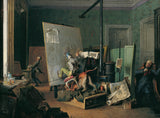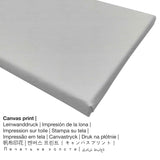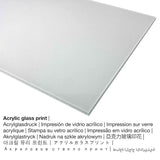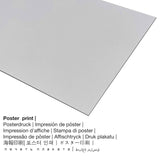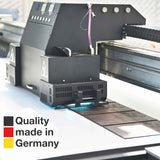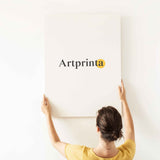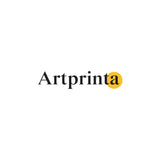Josef Danhauser, 1829 - Ihe nkiri na-atọ ọchị na studio - ọmarịcha nka
Ụtụ gụnyere. Mbupu gbakọrọ na ndenye ọpụpụ.
Ozi gbasara mbipụta nka aha ya bụ "Funny scene in the studio"
Funny scene in the studio is a painting made by the realist painter Josef Danhauser in 1829. Ihe osise a nwere nha: 40,3 x 52 cm - akụkụ etiti: 59 x 72 x 8 cm. Oil on canvas was applied by the European artist as the medium of the artpiece. The original artpiece has the following inscription: signed and dated lower left: Danhauser / 829. This artpiece is part of the digital collection of Belvedere in Vienna, Austria. We are delighted to reference that the public domain work of art is provided with courtesy of © Belvedere, Vienna, nọmba ngwa ahịa: 2552. Na mgbakwunye, ọrụ nka nwere akara kredit: nyefee site na Kunsthistorisches Museum, Vienna na 1926. N'elu nke ahụ, nhazi a na-abanye odida obodo format ma nwee oke nke 4: 3, nke pụtara na ogologo bụ 33% ogologo karịa obosara. Josef Danhauser was a artist, painter of Austrian nationality, whose artistic style can mainly be classified as Realism. The Realist painter was born in 1805 in Vienna, Vienna state, Austria and passed away at the age of 40 na 1845.
Nkọwapụta izugbe nke Belvedere (© Copyright - nke Belvedere - Belvedere)
One year after the "Schola Renz Always" (Inv 2109) discussed Danhauser once more his metier. Another art world is full of life - this time by a large dog in his hunt for the cat lifts the painter along with his stool and pushes with both legs through the image. The joke of the presentation revealed that the head of the artist ends up in the mouth of painted hippopotamus and the Africans in the picture by the Thrust the spear gives the impression that he would save the painter. The "Art structure" on the easel that has nothing to do with the culture of the master and is made on the basis of several graphical templates (to see the stapled to the canvas sheet and the open book next to the easel), is thus used content-expanding and by the realistic described hunting instinctual dog absurdity. Danhauser could not with this scene, even with the "Schola Renz Always" on a common image form to fall back, because representations of painters were previously limited to self-portraits. In contrast to these, which are based solely on one's own person and the professional dignity, clinging Danhauser himself out, brought own situation knowledge and described the events as an observer from the outside. By intertwining of real and fictive level, he has continued spun in the present painting, which he had criticized in "Schola Renz Always": he wanted the budding artists were, "vormalen" like what coming toward him, he should set his progress academic bids accordingly. This inherent criticism of the education system is reminiscent of the claims Waldmüller, because like this it appealed in numerous writings, not to let besides copying the study of nature aside, put Danhauser with his two studio scenes to mind copying and the importance of history painting in its conventional form in question. In order to give his concern emphasis, he picked up the most extreme, namely the destruction of the image - clear rejection of the tradition can not be expressed. [Sabine Grabner 8/2009] Literature: Sabine Grabner, in: self-image. The artist and his portrait, ed. v. Renate Trnek, exh. . Kat Academy of Fine Arts Vienna, Ostfildern-Ruit 2004; This .: The painter Josef Danhauser - Biedermeier period in the image. Monograph and catalog raisonné, Vienna, Cologne, Weimar 2011 (Belvedere of Works, 1), pp 37-45, 204, WV-No. 46
Ozi ahaziri na nka
| Aha nka: | "Funny scene in the studio" |
| Nhazi nka nka: | sere |
| Nhazi nka: | nkà nke oge a |
| Century: | 19th narị afọ |
| Afọ okike: | 1829 |
| Afọ nka: | gbara afọ 190 |
| Ihe osise izizi: | mmanụ na kwaaji |
| Akụkụ nke nka nka izizi: | 40,3 x 52 cm - akụkụ etiti: 59 x 72 x 8 cm |
| Akara mbinye aka: | signed and dated lower left: Danhauser / 829 |
| Ụlọ ihe ngosi nka / mkpokọta: | Belvedere |
| Ebe ngosi nka: | Vienna, Austria |
| ibe weebụ nke Museum: | Belvedere |
| License: | ngalaba ọha |
| Site n'aka: | © Belvedere, Vienna, nọmba ngwa ahịa: 2552 |
| Ebe kredit nke ọrụ nka: | nyefee site na Kunsthistorisches Museum, Vienna na 1926 |
Tebụl onye na-ese ihe
| Aha onye nka: | Josef Danhauser |
| Aha ndị ọzọ: | Danhauser Josef Franz, joseph danhauser, danhauser josef, Danhauser Josef, j. danhauser, danhauser j., Joh. Danhauser, jos. danhauser, peter danhauser, Danhauser Joseph, danhauser, E. Danhauser, danhauser j., josef danhauser |
| Gender: | nwoke |
| Nationality: | Ọstrịa |
| Ọrụ: | onye na-ese ihe, onye na-ese ihe |
| Obodo onye nka: | Austria |
| nhazi ọkwa: | omenkà nke oge a |
| styles: | Ihe ngosi |
| Ndụ: | 40 afọ |
| Afọ amụrụ: | 1805 |
| Obodo ọmụmụ: | Vienna, Vienna steeti, Austria |
| Afọ nwụrụ: | 1845 |
| Nwụrụ na (ebe): | Vienna, Vienna steeti, Austria |
Nye iwu ihe ị ga-atụkwasị na mgbidi gị
Maka mbipụta nka ọ bụla, anyị na-enye nha & ihe dị iche iche. Anyị na-ahapụ gị ka ịhọrọ nha na akụrụngwa ọkacha mmasị gị n'etiti nhọrọ nhazi ngwaahịa ndị a:
- Bipụta na iko acrylic na-egbuke egbuke (nke nwere ezigbo mkpuchi iko): An print on acrylic glass, which is often labelled as a UV print on plexiglass, changes your original work of art into magnificient wall decoration. The artwork will be custom-made thanks to modern UV printing machines. This makes vivid, stunning colors.
- Mbipụta kanvas: The printed canvas material mounted on a wood stretcher frame. Furthermore, a canvas generates a homelike and comfortable look. The advantage of canvas prints is that they are relatively low in weight, which means that it is easy to hang up the Canvas print without the use of extra wall-mounts. A canvas print is suited for all types of walls.
- Ebipụta akwụkwọ mmado na ihe akwa akwa: A poster is a printed sheet of cotton canvas with a granular surface finish. Please note, that depending on the size of the poster print we add a white margin of approximately 2-6cm round about the print in order to facilitate the framing.
- Metal (aluminium debond mbipụta): These are metal prints on aluminium dibond with an impressive depth - for a modern look and non-reflective surface. For the Print On Aluminum Dibond, we print the favorite artpiece on the aluminium composite surface. The colors are luminous and bright in the highest definition, fine details of the print appear clear and crisp, and the print has a a matte look that you can literally feel. The direct UV print on Aluminum Dibond is the most popular entry-level product and is an extremely contemporary way to display art prints, since it draws focus on the image.
Banyere ihe a
| Nkewa ngwaahịa: | ọrụ mgbidi |
| Usoro mmeputakwa: | mmeputakwa n'ụdị dijitalụ |
| Produzọ mmepụta: | Mbipụta UV / dijitalụ |
| Nlụpụta: | arụpụtara na Germany |
| Stockdị ngwaahịa: | na mmepụta ihe |
| A na-atụ aro iji ngwaahịa eme ihe: | foto mgbidi, gallery mgbidi |
| Ndozi onyonyo: | nhazi odida obodo |
| Ụdị anya: | 4: 3 ogologo ruo obosara |
| Akụkụ akụkụ pụtara: | ogologo bụ 33% ogologo karịa obosara |
| Akụrụngwa ị nwere ike ịhọrọ: | mbipụta akwụkwọ mmado (akwụkwọ kwaaji), mbipụta kanvas, mbipụta enyo acrylic (nwere ezigbo mkpuchi iko), mbipụta ọla (aluminium dibbond) |
| Mpempe akwa akwa (akwa akwa na etiti ihe ndọtị) nha: | 40x30cm - 16x12", 80x60cm - 31x24", 120x90cm - 47x35", 160x120cm - 63x47" |
| Mpempe iko acrylic (nwere ezigbo mkpuchi iko) nha: | 40x30cm - 16x12", 80x60cm - 31x24", 120x90cm - 47x35", 160x120cm - 63x47" |
| Nhọrọ nha nke akwụkwọ mmado (akwụkwọ kwaaji): | 40x30cm - 16x12", 80x60cm - 31x24", 120x90cm - 47x35" |
| Ụdị nha ebipụta aluminom: | 40x30cm - 16x12", 80x60cm - 31x24", 120x90cm - 47x35" |
| Igwe onyonyo: | enweghị etiti |
Disclaimer: We try all that we can in order to describe the products as accurately as possible and to display them visually on the different product detail pages. At the same time, the colors of the print products and the imprint can differ marginally from the representation on your monitor. Depending on your screen settings and the quality of the surface, not all colors are printed 100% realistically. Bearing in mind that our art reproductions are processed and printed manually, there might also be minor deviations in the motif's exact position and the size.
Copyright right, Artprinta.com

